
Subscribe to our newsletter!
We don't spam. You will only receive relevant and important tips for you and your business.
Unsubscribe anytime.
Content is constantly being thrown at consumers. There are 2.5 quintillion bytes of data created every day. According to Nielsen, US adults now spend nearly half of their day interacting with media. Information is consumed at breakneck speed and distraction is the norm.

Linda Stone, an ex-Apple and Microsoft consultant coined the phrase Continuous Partial Attention (CPA). It is different than multitasking, which is done mindlessly. Instead, it is motivated by a desire to be connected. According to Stone, “to be busy, to be connected, is to be alive, be recognized, and to matter.”
This constant need to be connected means that people are consuming content constantly. Asurion reports that people check their phones every 10 minutes. I can honestly admit that in the time it took me to write this much, I checked my phone a few times. With so much information at their fingertips, consumers can find the answers to their questions in just a few seconds.
So, how do you break through the clutter?
To write content that will resonate with someone, you must have an idea of who is going to read it.
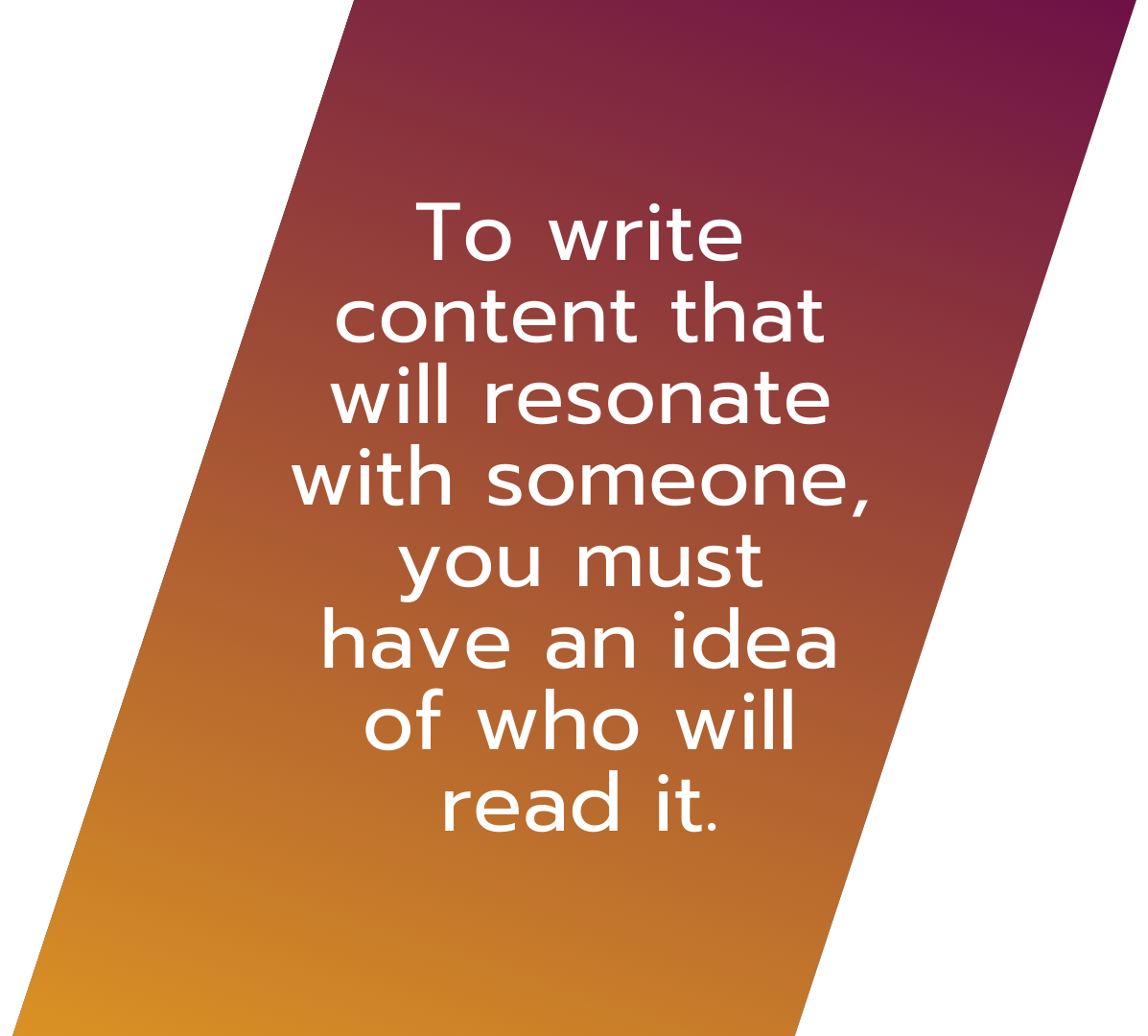
To define your audience in writing, you must first know what an audience is. Your audience is defined as a group of people that you intend for your content to be read by. It’s important to consider your audience when writing so that you can optimize your content to best serve the reader.
Writing for an audience will help guide how you structure your work, what kind of language you use, what information you include, and how you approach each topic. For example, if you are writing a blog for small business owners who may need digital marketing or website help, you should make sure to explain web-related topics and keywords thoroughly.
New research shows that younger brains can process information faster than older generations, making it easier for them to transition from task to task. Generations that grew up in this era are conditioned to constantly change their focus. Comparatively, older adults can focus and learn better due to a more resilient and longer-lasting attention span.
This information determines how your content should be structured depending on the generation you are catering to. For example, if you write pieces for a lifestyle blog that is aimed at college students, the format of your blog should be easy to digest, short, and to the point. Your readers are probably looking for answers, and they want them right away. However, if you write content for a website that is frequented by Baby Boomers or Gen Xers, then your pieces should be longer, more in-depth, and informational.
At Hoist, our intended audience falls into the earlier end of the millennial generation. So, we make sure to provide answers to our audience’s questions, break up our content, and bold the most important information so it’s easier to decipher.
To better understand your audience, you can build a fictional consumer to represent your target. Audience personas are used by marketing agencies and businesses to better market their products to consumers and uncover human truths. Building a persona will help you to understand your audience’s needs and desires and allow you to discover their interests and how they spend their time.
To develop a persona, you first need to establish their demographic status. This includes their age, gender, location, income, education, family, and interests. Further, you can develop values, goals, fears, and challenges to understand the needs of the consumer.
Of course, this information should be based on research and data. If you have an idea of who you want your audience to be, you can cater your content to this target. However, if you already have a following and are trying to understand who they are, you’ll want to do some digging.
After you’ve established who your audience is, you need to dive into what your audience is looking for. Your audience persona will give insight into how your audience goes about their daily lives, which is imperative to understanding how to empathize and relate to them.
How can you help?
Once you’ve uncovered some daily challenges or frustrations that your reader encounters, you can provide a solution.
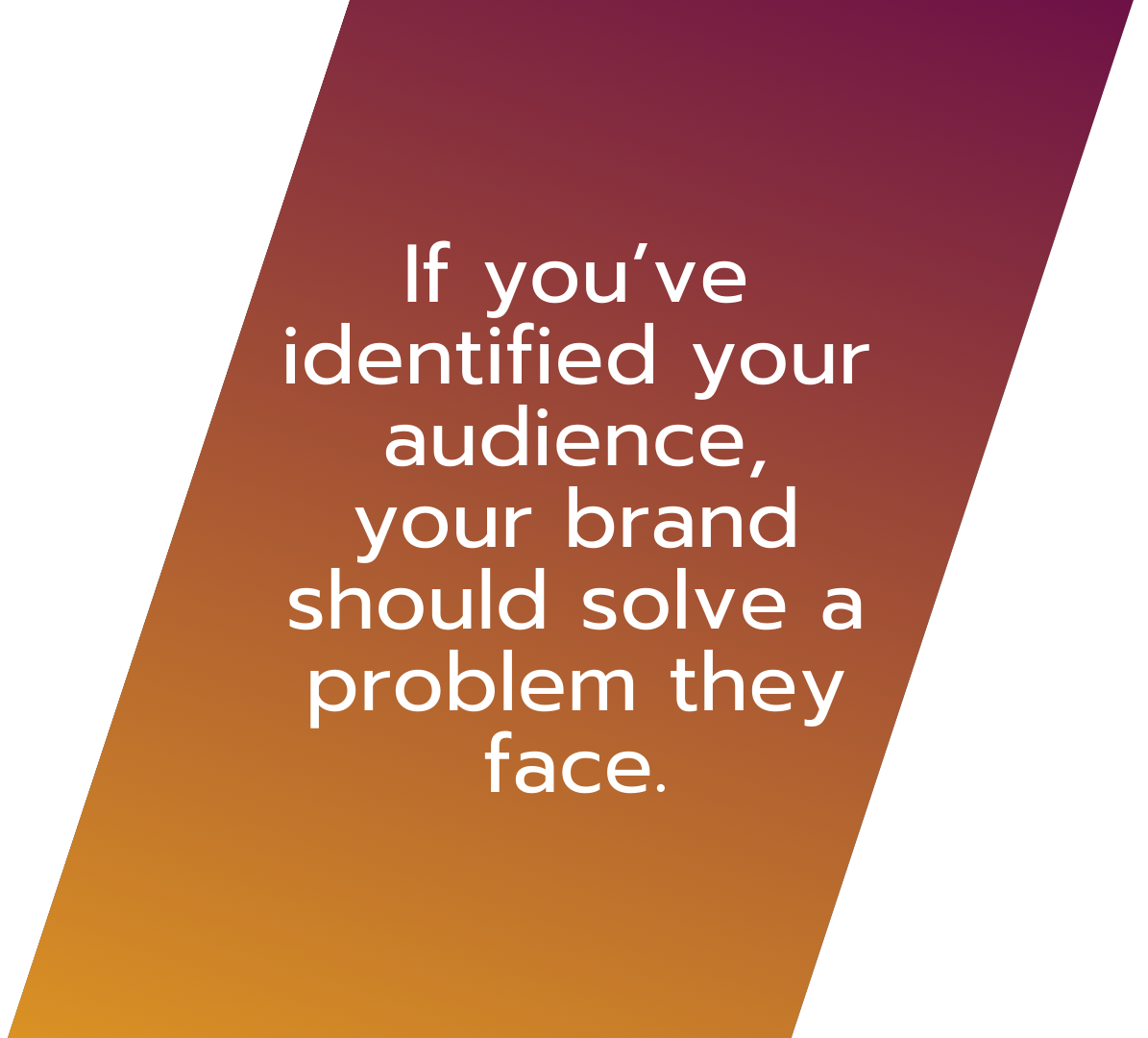
Whether you’re a marketing agency writing to small business owners or a landscape company writing for new homeowners, your information should offer valuable solutions that fit into your readers’ lifestyles.
For example, if you're writing on behalf of a marketing agency that writes for small business owners, your content should answer the questions that small business owners have when it comes to marketing like how much does it cost to hire a digital marketing agency? Then you can include a CTA to encourage readers to contact your digital marketing agency to talk about solutions.
To foster a deeper relationship, you need to spark an emotional connection. Speak directly to the reader and address their personal needs in your writing. If you encourage readers to leave comments, take the time to respond to them.
Consumers will be more adept at your business if you share similar values. According to Edelman’s Trust Barometer Report, global consumers now trust business more than government.
Taking a stand on a social problem actually helps brands. According to a study conducted by Edelman, 40% of people surveyed said they bought a product for the first time for the sole reason that they appreciated the brand’s position on a controversial societal or political issue. A company’s stance on a social issue can drive purchase intent just as much as the features of a product.
This doesn’t only relate to brands that produce consumer products. No matter your business, customers want to know where you stand.
Your content should provide beneficial information. You want it to stick with and influence your reader.
The same information is available everywhere, so you want to create original content.
Because users are used to finding the answers to their questions in a second, your content should be formatted so that it’s easy to scan.
On our blogs, our goal is that no matter where you’re at on a page, you should always be able to see an image. This rule helps us to break up content.
While many pieces of content will end in a call-to-action, the content should still be informative and objective. Provide facts and not just opinions.
Instead of focusing on persuading the reader to click your CTA, you should keep the user in mind and cater your content to the answers they’re looking for.
While your priority is to provide for the reader, don’t be afraid to let your personality show.
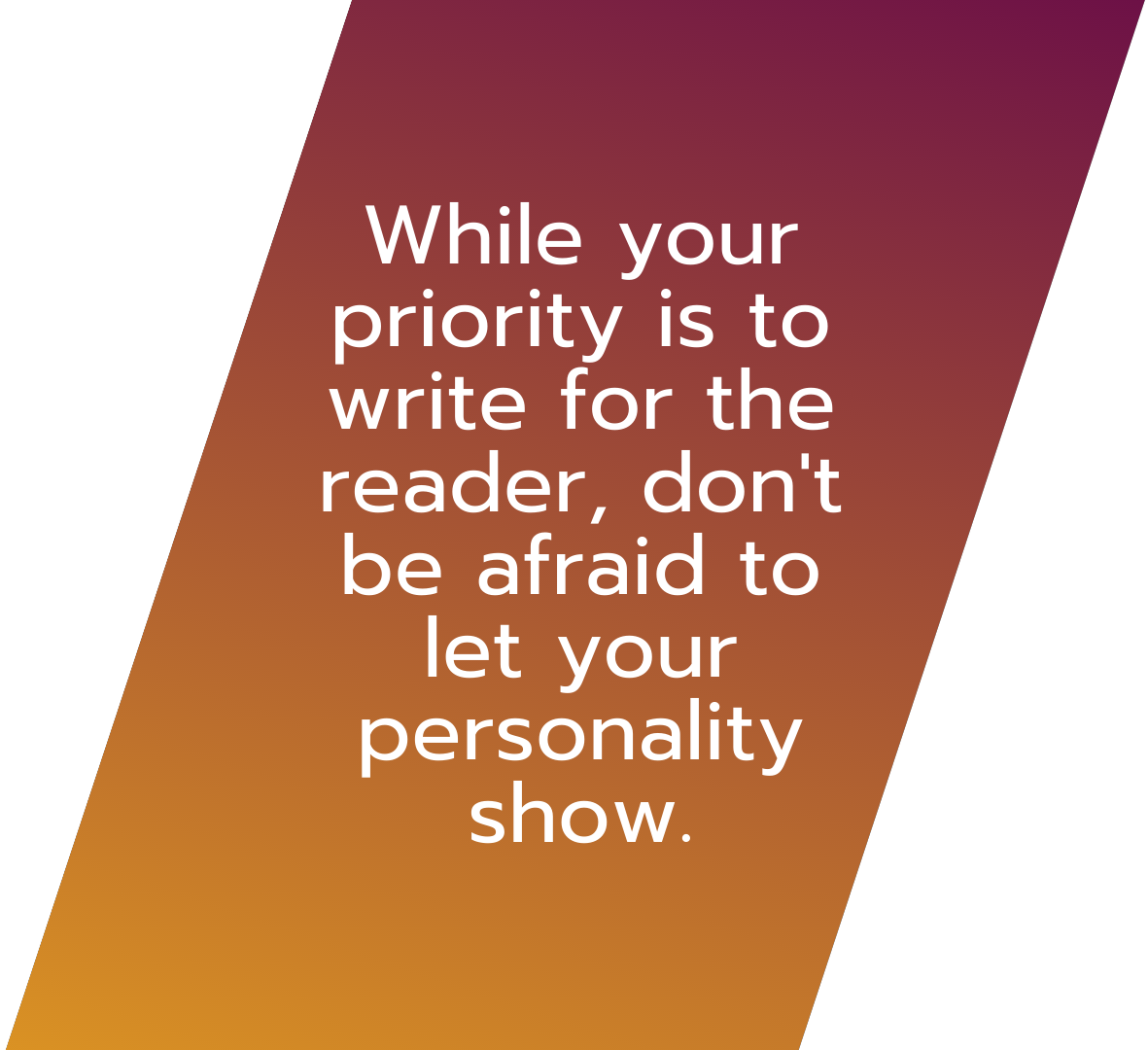
More than providing the right information, you need to keep the reader engaged.
While the first sentence should get the reader’s attention, the rest of your piece should flow seamlessly to keep them captivated.
The language you use is especially important. The research you do on your audience should help you to determine how to speak to the reader. If you are writing a piece for millennials, you should use language that will resonate. Some examples of language that only a millennial audience would understand are “salty” or “basic”.
Similes, metaphors, and imagery will allow the reader to engage their senses, which will, in turn, pull the reader in and keep them captivated.
This might be the most important factor when writing a piece of content, especially when writing to a specific niche. When writing for an audience that knows their stuff, it will be obvious if you don’t know what you’re talking about.
Your reader should feel that they are getting their information from a credible source. If you write about an idea that isn’t your own, always cite your sources.
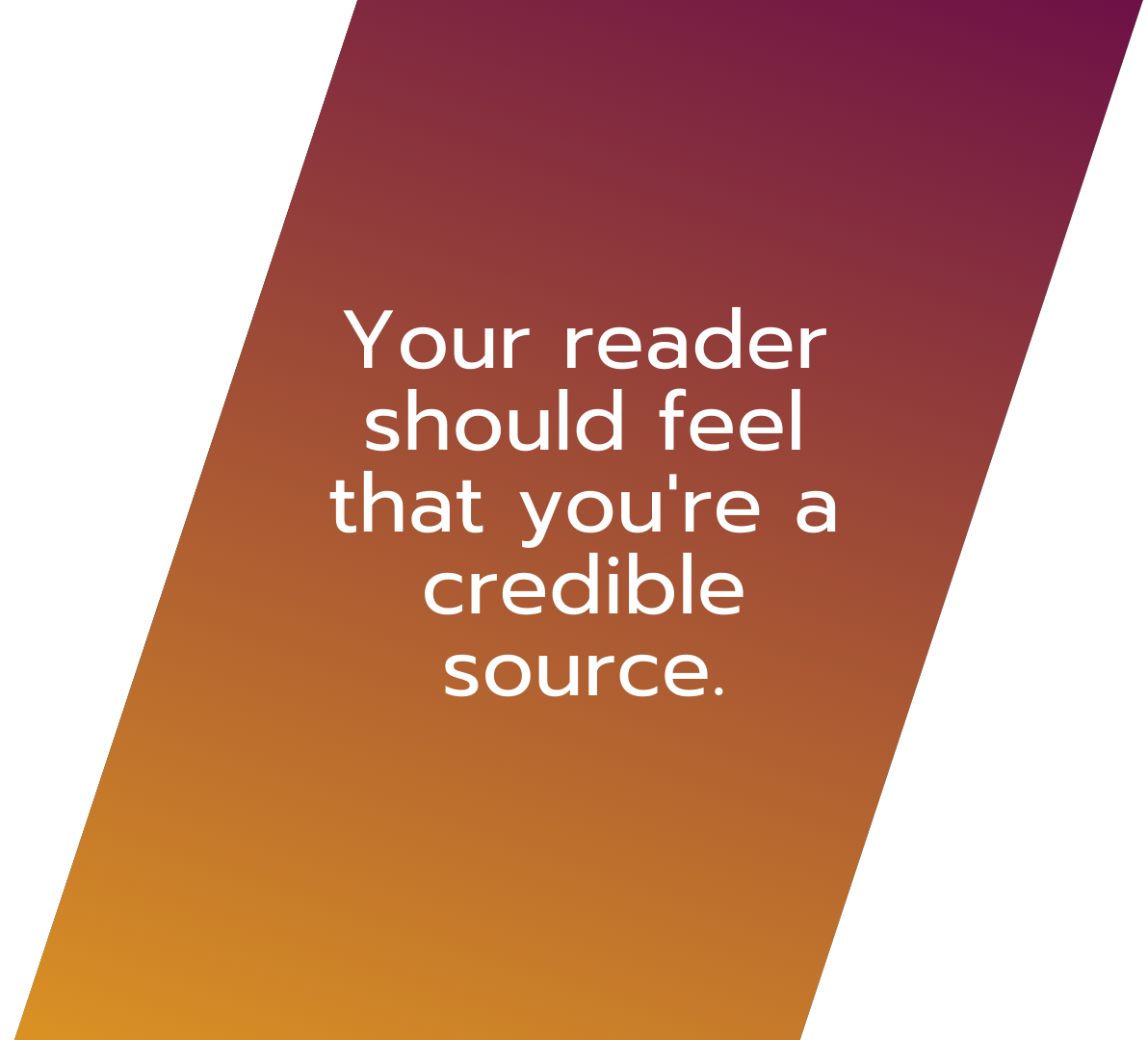
So, what if you don’t know a ton about your topic?
First, perform some general research. Find out what content is already out there, whether there is any recent news coverage of your topic, and if there are any controversial opinions out there.
Next, reach out to some influencers or industry experts. Find out what they know and what opinions they have on the subject. When you are done with your piece, reach out to them to fact-check and provide feedback.
One of our favorite digital marketing experts is Neil Patel. We were able to interview him and collect some of his insight on SEO strategy, keeping up with changing tactics, and reaching consumers.
Collect reliable data and facts. If you aren’t an expert on the subject, then you will want others’ opinions to act as your voice of authority.
Spelling and grammar mistakes will hurt your credibility- and make your content harder to read.
Not only will your piece appear sloppy, but Bing stated that poor grammar will hurt your rankings. Google hasn’t said whether or not grammar mistakes affect ranking. The algorithm that ranks content on Google does filter out “poor-quality content”, though no one is certain how much of that is determined by spelling and grammar.
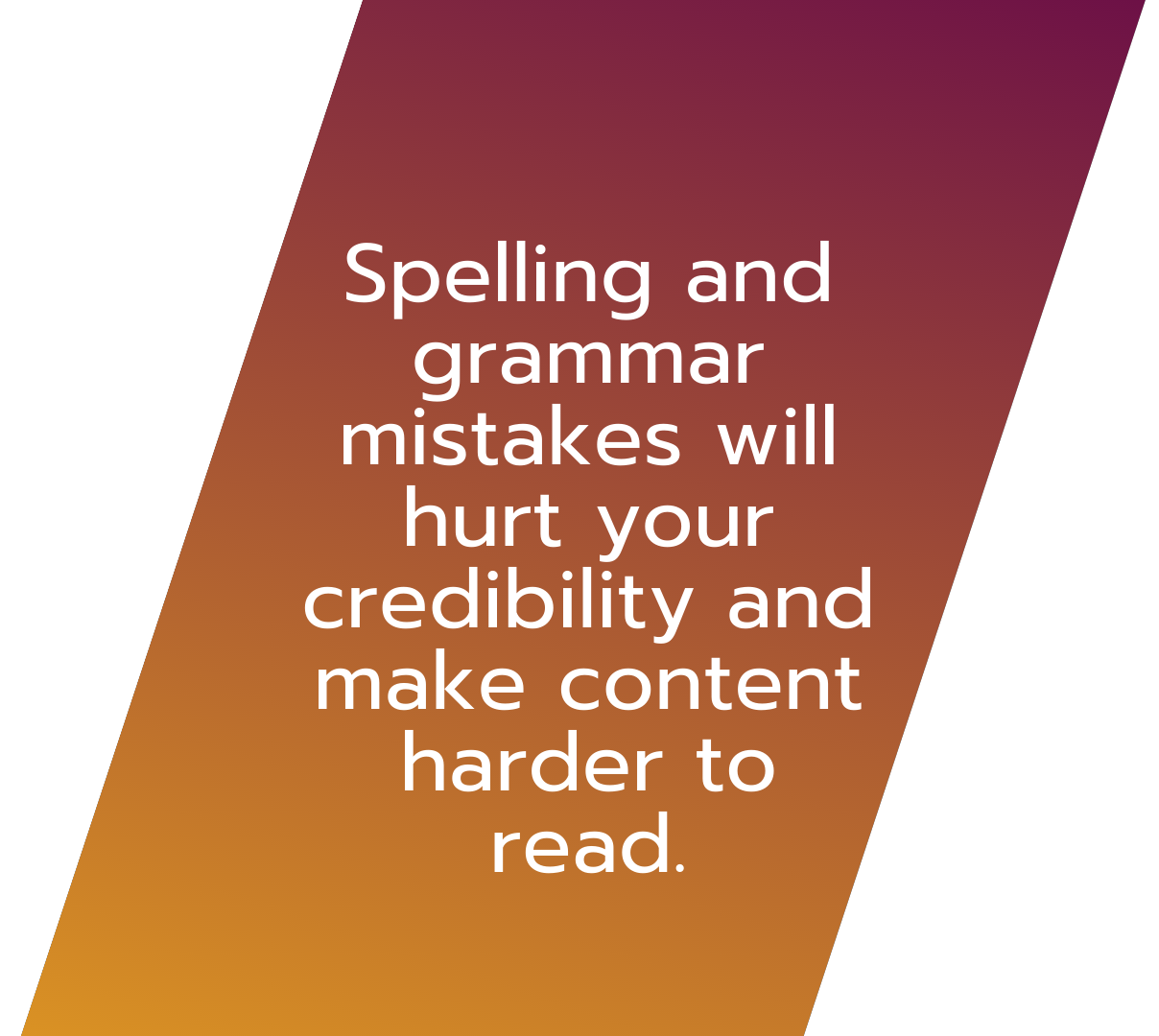
If grammar often trips you up, we suggest using Grammarly and Hemingway to correct mistakes before you make your content public.
To best understand if your content resonates with your target audience, ask for feedback.
You can either ask someone who fits your target to read your piece or encourage readers to share their thoughts by commenting on your post.
Either way, you will benefit and learn how to alter the way you write for your intended audience.
No one says it better than Ira Glass: when you first start making work, it won’t be very good. But if you continue to create mediocre work, eventually you’ll begin making really good work. It just takes practice.
Writing is just like any other skill; you must work at it often. Set aside time to write every day, no matter what it is. The more you do it, the more natural it will become.
Implementing these tips will help you to break through the clutter by identifying and writing content that will engage your audience.
.png)
Need to break through the clutter?